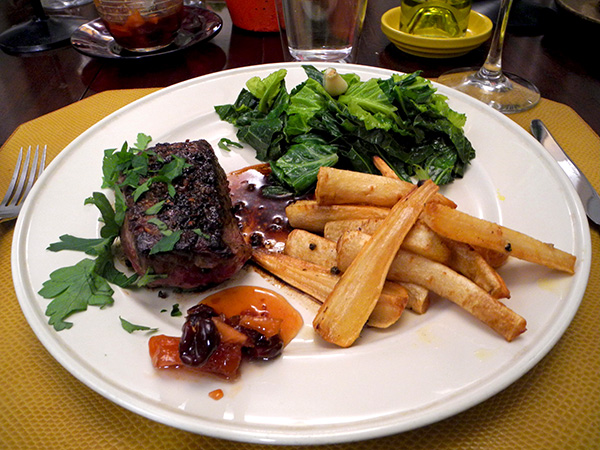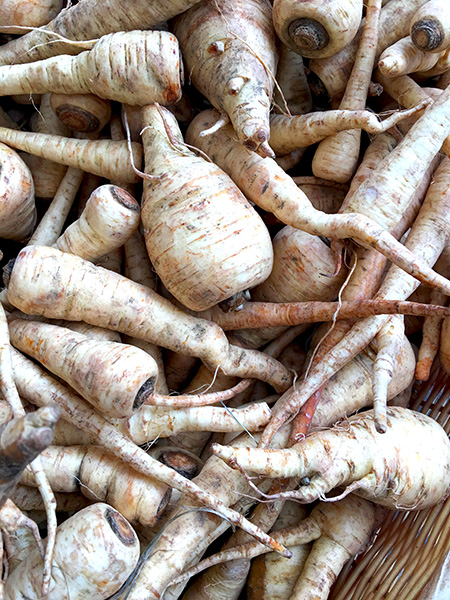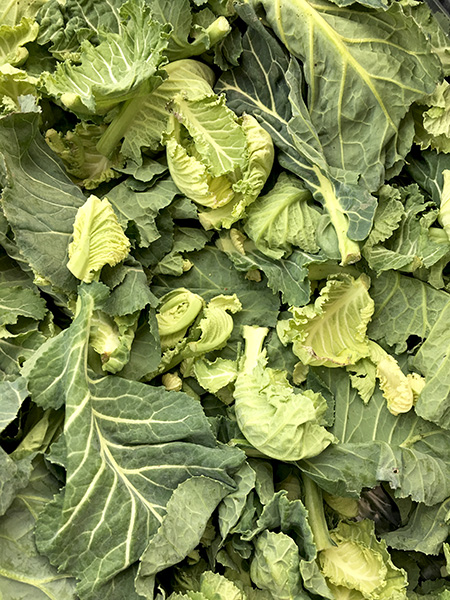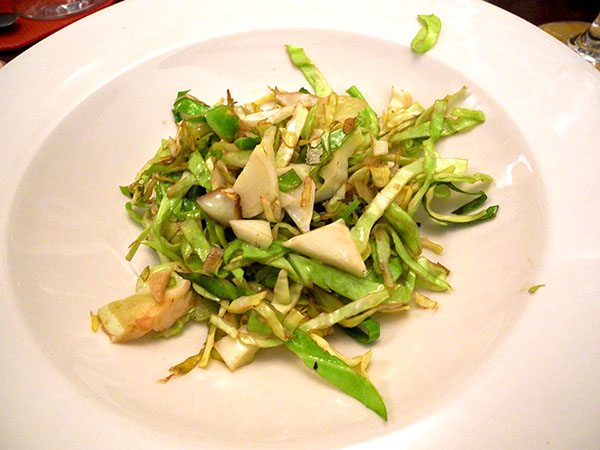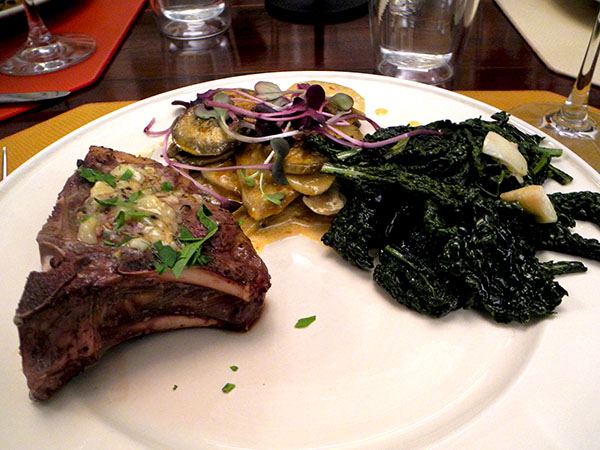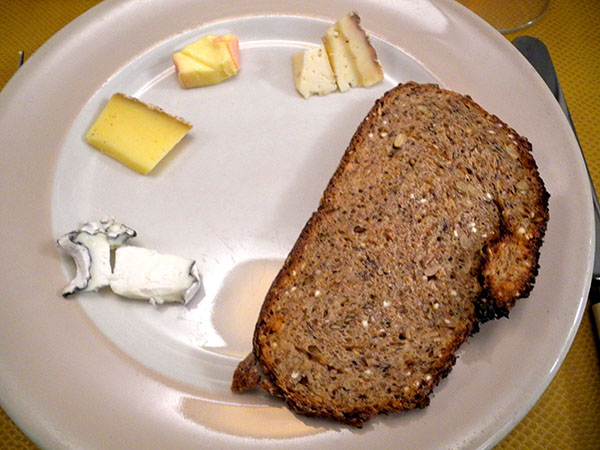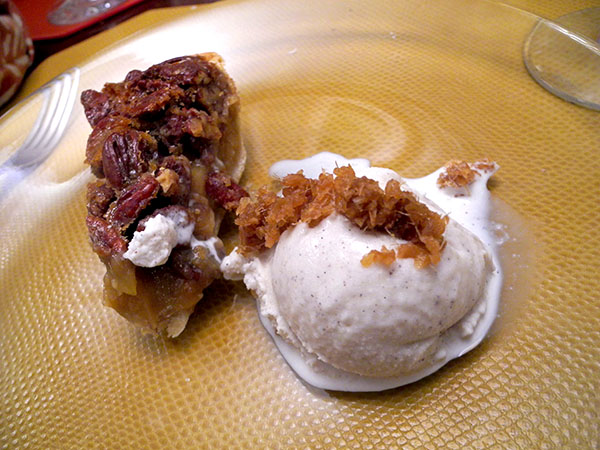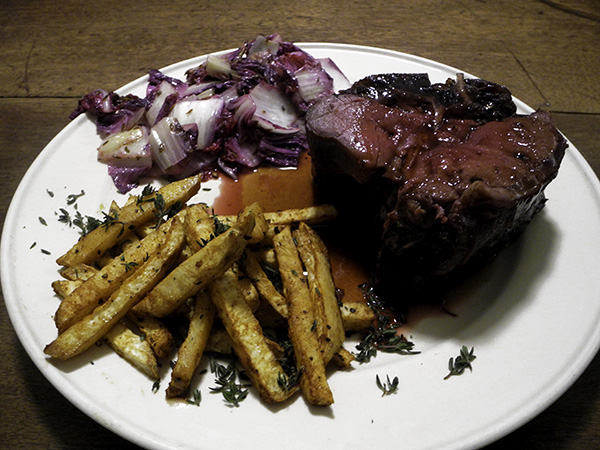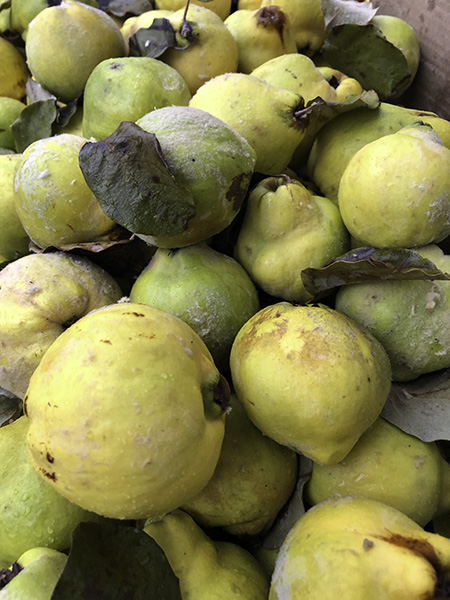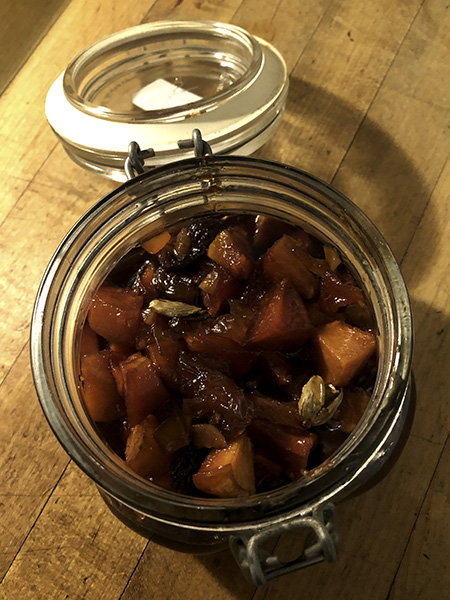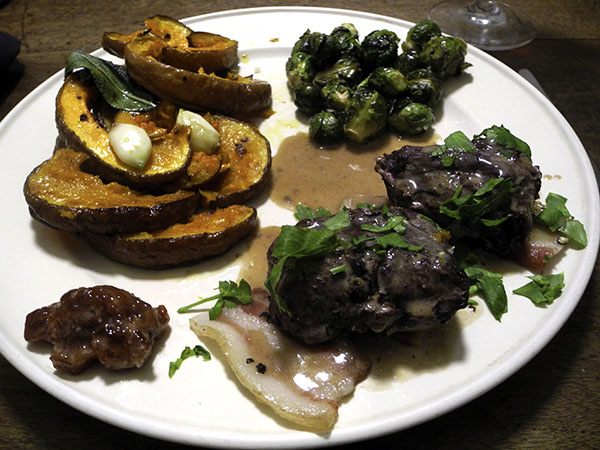
This isn’t a German dinner, in spite of what appear to be some reasonable cues to the contrary.
More like American, or, specifically, more like my kitchen.
I used my imagination to assemble a meal which would enjoy the accompaniment of the quince chutney left over from our Thanksgiving duck feast, and smoked pork (Kassler) seemed like it would do the trick, especially on a weekday, as it requires no real cooking.
We finished off our plates, but ironically it was the little service bowl of chutney once again that remained when we were done. It’s no reflection on the delicious condiment, since we’re not really big on sweets, and sugars were an important element in 3 of the 4 items on the plate.
Maybe I’ll spread some on toast, or Bread Alone’s very Germanic Fruit and Seed Brød, tomorrow morning.
- a tablespoon or more of rendered duck fat heated inside an large antique tin-lined copper heavy skillet, where it had softened the chopped white section of a medium size scallion from Stokes Farm, the green section reserved for later, 2 smoked loin pork chops from Schaller & Weber added, the pot covered with a universal copper lid, kept above a very low flame (just enough to warm the chops through, as they were already fully-cooked), turning the meat once, then, near the end of the cooking time (I went 8 or 9 minutes this time), the green parts of the onion, which had been set aside earlier, now also sliced, added on top of the chops for a minute or so before they were removed, arranged on the plates, brushed with a little horseradish jelly from Berkshire Berries, sprinkled with both the white and green sections of the scallion

- a bit of quince chutney made last week, using this theKitchn.com recipe, incorporating a red shallot from Norwich Meadows Farm, a Rocambole garlic clove from Keith’s Farm, quince from Troncillito Farms, dried sweet cherries from Manhattan Fruit Exchange in the Chelsea Market, fresh ginger from Lani’s Farm, and a local apple cider vinegar from Race Farm
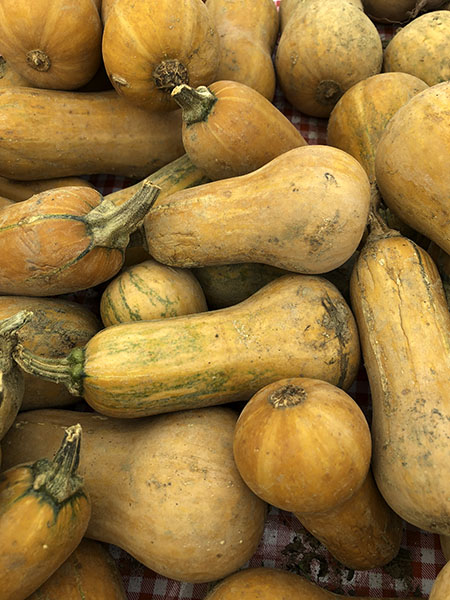
- two very small Honey Butternut squash from Lani’s Farm, scrubbed, halved, the seeds removed, placed cut-side up in a baking dish, and a mix of almost 2 tablespoons of maple syrup, an equal amount of fresh water, the zest and juice of less than half of a lemon, part of one fresh habanada pepper from Norwich Meadows Farm, and a pinch each of sea salt and freshly-ground black pepper brushed or poured over the top, then dotted with less than 2 tablespoons of butter, placed in a 375º oven and baked for 15 or 20 minutes, the squash flipped over and continued cooking, basting halfway through, until caramelized and tender, or 20-25 more minutes (serving as edible sauce boats really)

- wild cress from Lani’s Farm, dressed with a little Frankies 457 Sicilian olive oil, Maldon salt, and freshly-ground black pepper (although I now think it would have been better to leave this excellent cress naked)
- the wine was a French (Burgundy) red, Bourgogne Rouge, Dom. des Meix Poron 2015, from Astor Wines
- the music was Thomas Arne’s 1740-1745-1753 sung stage work/masque/oratorial about Alfred the Great, ‘Alfred’, Nicholas McGegan conducting the Philharmonia Baroque Orchestra and Chorale, with David Daniels, Christine Brandes, Jennifer Smith, Jamie MacDougall
